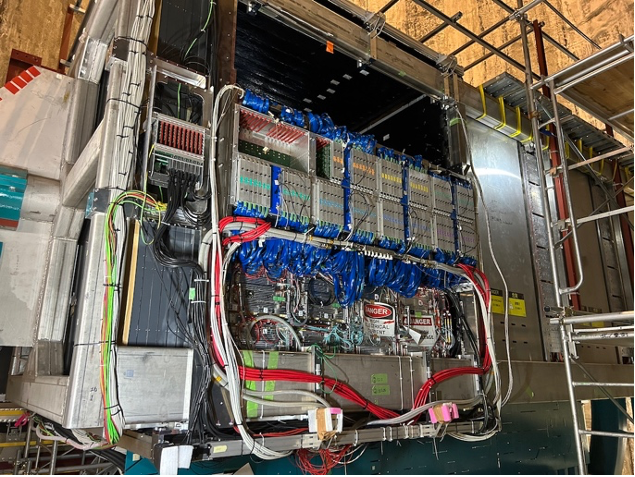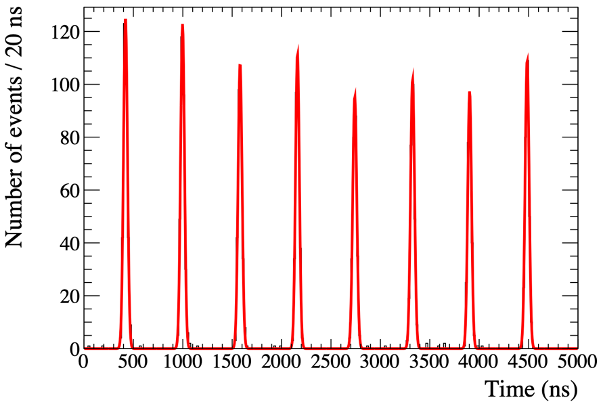The T2K Collaboration has started data taking using the enhanced neutrino beam and new neutrino near-detectors from December 2023. The KEK/J-PARC center has upgraded the main ring accelerator and the neutrino beamline to increase the beam power. T2K has also upgraded its neutrino production instruments. The stable operation of neutrino beam has been successfully achieved at a record high beam intensity (about 710 kW), an increase of about 40% compared to before the upgrade. Furthermore, on December 25th, the continuous operation of neutrino beam has been successfully achieved at 760kW, which is greater than the initial design beam power. The pulsed electromagnet (electromagnetic horn) system, the heart of the neutrino generator, was also upgraded. The current applied to the electromagnetic horn has been increased from 250 kA to 320 kA. This allowed us to increase the neutrino intensity by about 10%. In addition, T2K installed new neutrino detectors that can measure neutrino interactions with even higher precision than before. The newly installed detectors consist of SuperFGD, which detects tracks around a neutrino interaction point inside the detector, High-Angle TPC, which measures momentum of particles emitted over a wide range of angles, and Time-of-Flight, which can detect incoming or outgoing particles and identify particles. Neutrino event candidates were successfully observed during a technical run of the new detectors after the start of beam operation. In 2020, the T2K gave the first hints that the symmetry between matter and antimatter could be violated in neutrino oscillations. With these enhancements, T2K will continue to lead the world in advancing the understanding of neutrino properties and unraveling the mystery of the absence of antimatter in the universe.
Content
T2K is an experiment to study neutrino oscillations (*1) by sending neutrinos produced at the Japan Proton Accelerator Research Complex (J-PARC) in Tokai, Ibaraki, to the neutrino near-detectors and the Super-Kamiokande detector in Kamioka, Hida, Gifu, about 300 km away. The T2K experiment started taking data in 2010 and directly observed electron neutrino appearance for the first time in the world in 2013. In 2014, we started measurements using an anti-neutrino beam to verify CP violation (*2), and in 2020 we strongly restricted possible values of the neutrino CP phase (*3) for the first time. To obtain evidence of the CP violation, a more precise measurement is required to eliminate 0 and ±180 degrees from the possible range of CP phase with a high degree of confidence. However, in order to realize this, it is necessary to produce more neutrinos and to obtain a deeper understanding of the interactions between neutrinos and nucleus.
(*1) Neutrino oscillation
It is a phenomenon in which a neutrino changes into another type of neutrino as it travels through space. The discovery of this phenomenon showed that neutrinos have mass and earned Prof. Takaaki Kajita the Nobel Prize in Physics in 2015 (shared with Prof. Arthur McDonald).
(*2) CP violation
The “C” in CP symmetry represents the “C transformation,” which swaps the particle and the anti-particle (for example, swaps the electron and the positron), and the “P” represents the “P transformation,” which swaps the directions of up, down, left, right, front and back with respect to space, as if they were mirror images. When the same physical phenomenon occurs with the same probability when the “C transformation” and the “P transformation” are performed, it is called “CP symmetry”. When a phenomenon does not obey CP symmetry, it is called “CP violation”. The CP violation is one of the conditions that explain the fact that the current universe is dominated by matter. However, the quark CP violation observed so far is so small that it cannot explain the amount of matter in the universe today. Therefore, the neutrino CP violation is expected to provide a major hint for the mystery.
(*3) CP phase
The CP phase is a fundamental property of the “weak interaction” between elementary particles, introduced by Prof. Makoto Kobayashi and Prof. Toshihide Maskawa to explain CP violation in quarks. The CP phase can take values between -180 and 180 degrees, but for leptons such as electron and neutrino, the values have been completely unknown until recently. T2K experiment excluded nearly half of the range of possible values of the CP phase in 2020 with a confidence level of 99.7% (3 sigma).
Points of improvement
The T2K Collaboration, an international collaborative experiment involving approximately 570 researchers from 78 research institutions in 14 countries, has launched a new phase of the experiment using an enhanced neutrino beam and new near-detectors. Neutrinos are produced from decayed pions or other particles produced in interactions between proton beams and a graphite target. The KEK/J-PARC Center upgraded the J-PARC main ring accelerator, including the power supply for the main magnet, to increase the repetition rate of the proton beam from 2.48 seconds to 1.36 seconds, which supplies more protons to the neutrino production target. The T2K experimental group upgraded, modified, and exchanged instruments in the neutrino beam facility such as targets, electromagnetic horns, and beam monitors. The beam commissioning was started in November 2023. The stable production of neutrino beam has been successfully achieved at a record high beam power (about 710 kW), an increase of about 40% compared to before the upgrade. Furthermore, on December 25th, the continuous operation of neutrino beam has been successfully achieved at 760kW, which is greater than the initial design beam power. The heart of the neutrino generator is the electromagnetic horns (Fig.2). The current applied to the three electromagnetic horns was increased from 250kA to 320 kA by upgrading the power supply and other components, thereby improving the focusing efficiency of parent particles such as pions produced at the target. This improves the quality of the neutrino beam delivered to the Super-Kamiokande detector while increasing the number of neutrinos observed by about another 10%.

In addition, the T2K Collaboration has started observation using new neutrino near-detectors(Fig.3) at the Neutrino Monitor Building located 280 m downstream of the neutrino production target. By October 2023, three new types of detectors have been installed. A new detector, SuperFGD with a mass of approximately 2 tons of sensitive volume, is located at the center of the upgraded detectors. It has an innovative structure consisting of approximately 2 millions 1cm3 cubes each with 3 holes, made of plastic scintillator. Approximately 56,000 optical fibers penetrate the cubes from three directions and photodetectors are at the ends of the fibers. Charged particles can be observed in high resolution from three projections and 3D tracks can be reconstructed. Below the SuperFGD, the first High Angle Time Projection Chambers (HATPC) has been installed. The HATPC is a gaseous detectors composed by two field cages that produce a uniform electric field and that uses, as readout system, resistive Micromegas modules. HATPC is an innovative detector that allow for an excellent reconstruction of the track trajectory and hence of the momentum of particles emitted by neutrino interactions in the SuperFGD. Finally, the detectors surrounding the SuperFGD and HATPC are Time-of-Flight detectors. It is used to determine the direction of particles and particle identification. T2K started measurements with the upgraded neutrino beam in December 2023 and succeeded in observing neutrino event candidates from the newly acquired data (Fig. 4, 5).



Outlook
With these improvements, the T2K experiment enters a new phase with an enhanced neutrino beam and novel new detectors. The J-PARC accelerator and neutrino experimental facility are undergoing an upgrade plan to further increase the output power to 1.3 MW (= 1300 kW) while supplying beams for the T2K experiment. Together with the upgraded neutrino production instruments such as the electromagnetic horns with improved focusing efficiency, it will be possible to observe about three times as many neutrino interactions (per unit time) as before, and to reduce the error originating from statistical variations (statistical error) in the observed data. In addition, the new detector can detect large angle scattering in the neutrino interactions, which was not possible with our original detector. This will enable a better understanding of the neutrino-nucleus interactions and therefore reduces the systematic errors. Furthermore, the Super-Kamiokande detector has also improved its detector performance with a much higher neutron detection efficiency by loading gadolinium in the water. The T2K experiment will significantly improve the sensitivity of the measurements through these improvements and proceed to verify the differences in neutrino and antineutrino behavior. The J-PARC high-intensity proton accelerator and neutrino experimental facility are expected to play a key role in the next generation of neutrino research. The new phase of the T2K experiment is an important step toward the next generation of experiments and T2K is expected to continue to lead the world in neutrino research unraveling the mystery of the missing antimatter from our universe.
◯Related Links:
Press Release from the Highe Energy Accelerator Research Organization (KEK)「T2K experiment enters a new phase with significantly improved sensitivity for its world leading neutrino oscillation research」(2024/1/17)
Related website of J-PARC is as follows.







